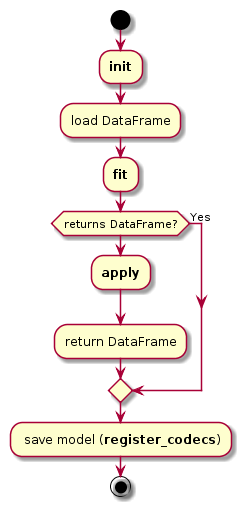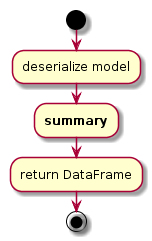Running process and method calling convention
There are a few parts of the logic that you need to be familiar with.
Fit command
In the fit command, when partial_fit=f (default), first the algorithm's fit method is called. If it returns a DataFrame, we return that to the search. If it doesn't, we will call apply later, then return whatever DataFrame apply gives us.
Fit command partial_fit=t
In the fitcommand, when partial_fit=t, the algorithm's partial_fit method is called on each chunk of 50,000 events. Then apply is called on those events. We continue this process until we run out of data.
Apply Command
In the apply command, things are much simpler. We reconstruct the python object by using its codec, then call apply on the events, chunk by chunk.
Summary Command
In the summary command, things are similar to apply. We reconstruct the python object by using its codec, then call summary.
| Write an algorithm class | Saving models |
This documentation applies to the following versions of Splunk® Machine Learning Toolkit: 2.3.0, 2.4.0, 3.0.0, 3.1.0, 3.2.0, 3.3.0, 3.4.0, 4.0.0, 4.1.0, 4.2.0, 4.3.0




 Download manual
Download manual
Feedback submitted, thanks!